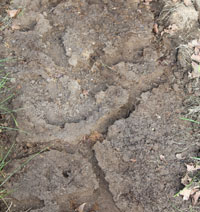What does the vole look like?
First of all, there is a great confusion about voles. People mistake the Deer Mouse or the White-Footed mouse for the Vole. The vole belongs to the Cricetidae family. It is a rodent but it is not a mouse.
The Meadow Vole, Microtus pennsylvanicus, is the most common specie we see aroun houses in Canada. The vole measures 12-20 cm long and weights 20-68 g. The vole is 2-3x heavier than the mouse. The vole’s nose and head are rounded. Its tail is short and its ears are tiny and hidden in the fur. The vole is brown and grey on its back and the tummy is greyish.
Call an expert Ask an expert » Get a quick quote »Does the vole represent a risk for me or damage my belongings?
Voles do not infest houses, only true mice do. The Meadow Vole lives in colony. It is active all year round. It prefers open grass fields and marshes.
The vole feeds on plants, seeds, roots and small insects. The vole is harmless to human and does not cause any damage to houses. Nevertheless, the vole can cause damage to plants, small trees and lawn. Voles can be encountered around farms, around the food storage for farm animals and dirt crawling spaces.
Call an expert Ask an expert » Get a quick quote »What are the signs of the vole’s presence?
The Meadow Vole is active day and night, 3-4 hrs per period. One has to get up very early in the morning and take a close look to the ground or at the grass. You might see a vole on grass, feeding from seeds. Most often, we notice only the signs of their presence.
 The ground surface looks like it has been bombarded. Each hole is about 3 cm in diameter, if the ground is soft and spongy. The vole’s holes have a small incline, as opposed to the mole’s holes who are vertical. The vole’s ridges are 3 cm wide. In winter one can notice gnawing marks on the bark of young fruit trees and small busches.
The ground surface looks like it has been bombarded. Each hole is about 3 cm in diameter, if the ground is soft and spongy. The vole’s holes have a small incline, as opposed to the mole’s holes who are vertical. The vole’s ridges are 3 cm wide. In winter one can notice gnawing marks on the bark of young fruit trees and small busches.
What should I do if I have voles?
Repulsive products available on the market have a temporay action and one needs to repeat the treatment several times. The biologist of SOS Bugs will find out entry/exit points and set up traps to catch them. We relocalize voles whenever it is possible.
SOS Bugs can also help you take care of moles, shrews, rats, mice, etc. Consult our web site for specific information on each of theses pests. Call us at 819-328-7017
Call an expert Ask an expert » Get a quick quote »


